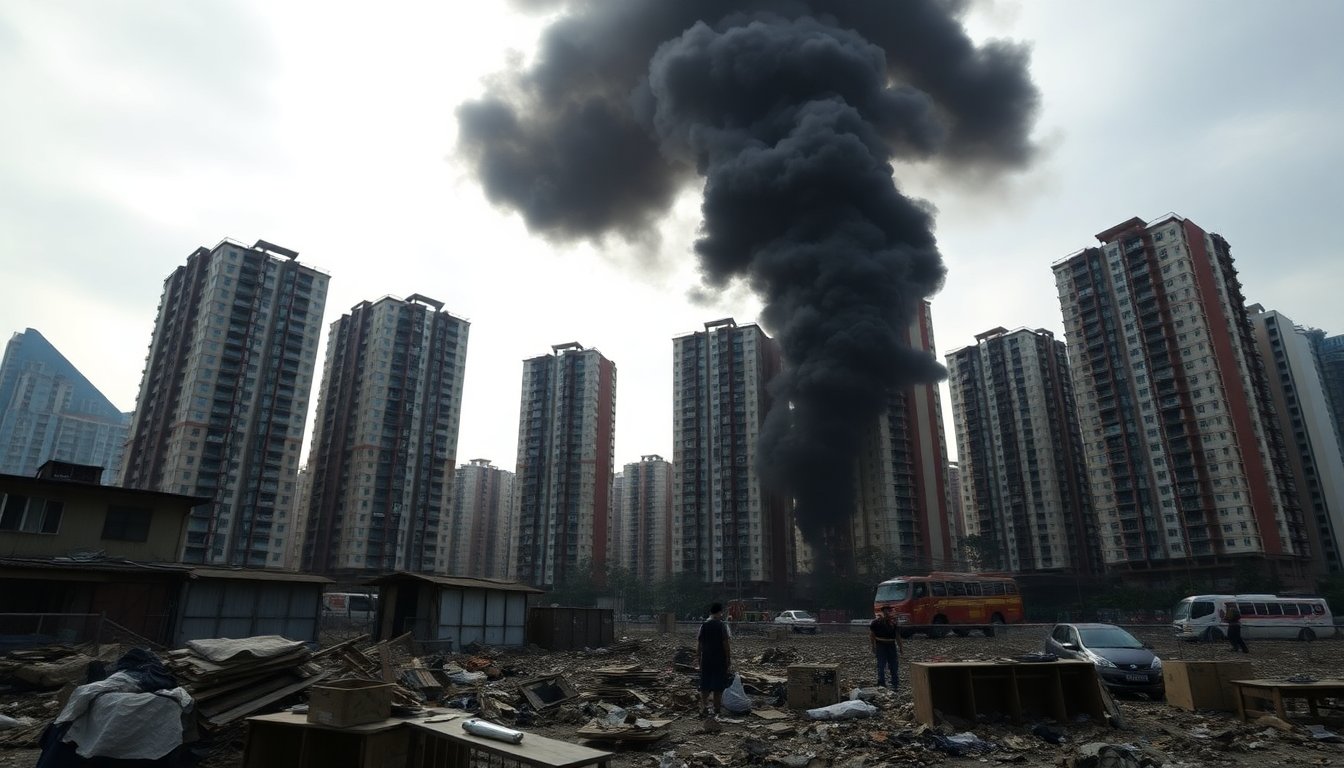Table of Contents
A fire at a high-rise residential building in Hong Kong has resulted in a tragic loss of life, with the death toll reaching 55. In response, Chief Executive John Lee ordered a comprehensive inspection of all public housing undergoing significant renovations. This incident raises urgent questions about safety regulations related to construction practices in the densely populated city.
The fire erupted at the Wang Fuk Court housing complex, which has eight blocks and houses over 4,600 residents. As firefighters battled the flames, many residents became trapped, leading to a desperate rescue operation. Among the fatalities is a firefighter, and many others have sustained critical injuries.
Investigation into construction practices
Police reports indicate that the fire may have been intensified by flammable materials and unsafe scaffolding used during ongoing maintenance work. The use of such materials has sparked outrage among residents, prompting investigations into the construction companies involved. Superintendent Eileen Chung stated, “We suspect gross negligence by the responsible parties, leading to this disaster that caused significant casualties.”
Safety concerns in high-rise living
In recent years, Hong Kong has experienced a rising number of construction safety incidents. This fire marks the deadliest since the 1948 tragedy that resulted in 41 deaths. Although the government had announced plans to phase out traditional bamboo scaffolding due to safety concerns, this incident highlights the ongoing risks associated with high-rise living in one of the world’s most densely populated cities.
The Wang Fuk Court complex, established in 1983 as part of a subsidized home ownership scheme, has been undergoing renovations costing approximately HK$330 million. Residents have expressed anger over perceived negligence that led to this devastating outcome. Many are questioning the adequacy of safety measures in place, particularly regarding the construction company’s practices.
Community impact and responses
The aftermath of the fire has left hundreds unaccounted for, with approximately 279 individuals still missing and many more displaced. Emergency shelters have been set up for nearly 900 evacuees who have lost their homes. Disheartened residents are voicing their frustrations on social media, demanding accountability from local authorities and construction firms.
Government actions and public outcry
Local and national authorities have faced criticism for their handling of safety regulations. President Xi Jinping of China has called for an “all-out effort” to manage the disaster and minimize further casualties. The city’s Transportation Department has announced road closures and bus diversions in the area as firefighters continue rescue operations.
The incident has drawn parallels to the Grenfell Tower fire in London, which highlighted similar failures in safety oversight. The Hong Kong government faces increasing pressure to conduct thorough investigations and implement necessary reforms to prevent such tragedies from occurring in the future.
As families mourn their losses, attention turns to the regulatory frameworks governing construction and safety in Hong Kong. The public demands transparency and accountability to ensure that such a devastating incident does not happen again. Community resilience will be crucial in the recovery, but significant changes are necessary to restore trust in the system.


